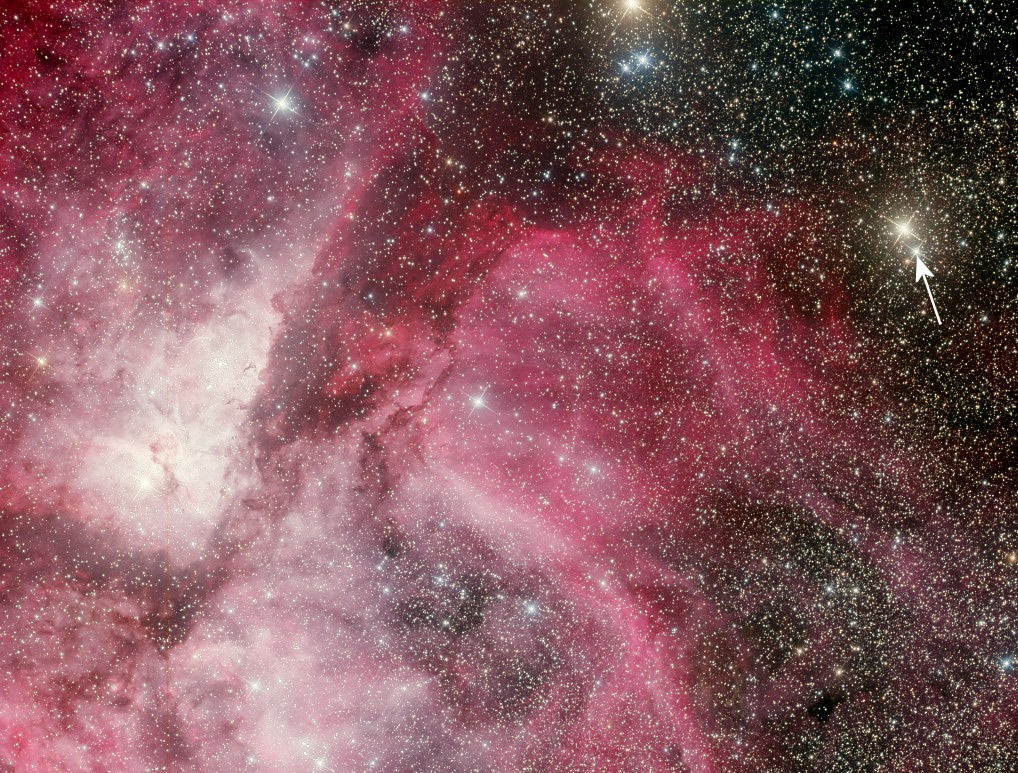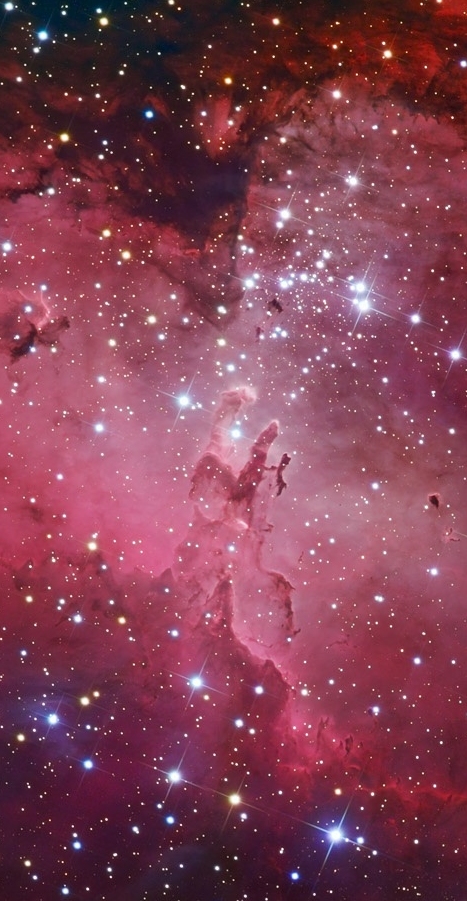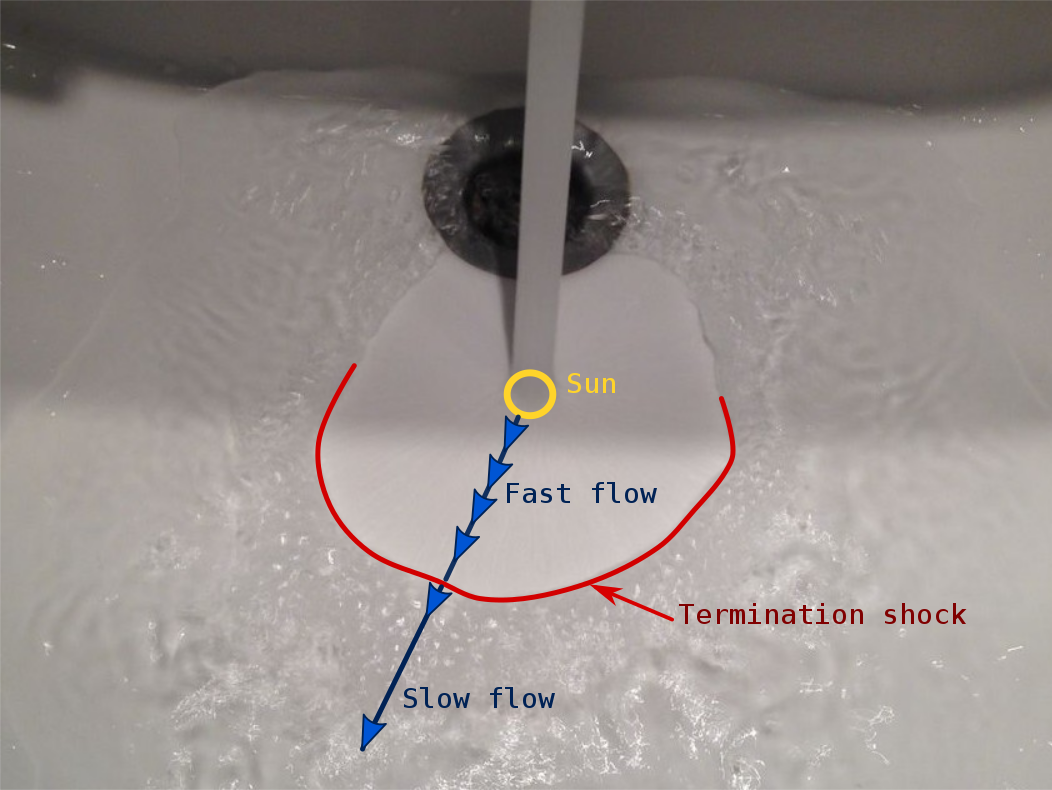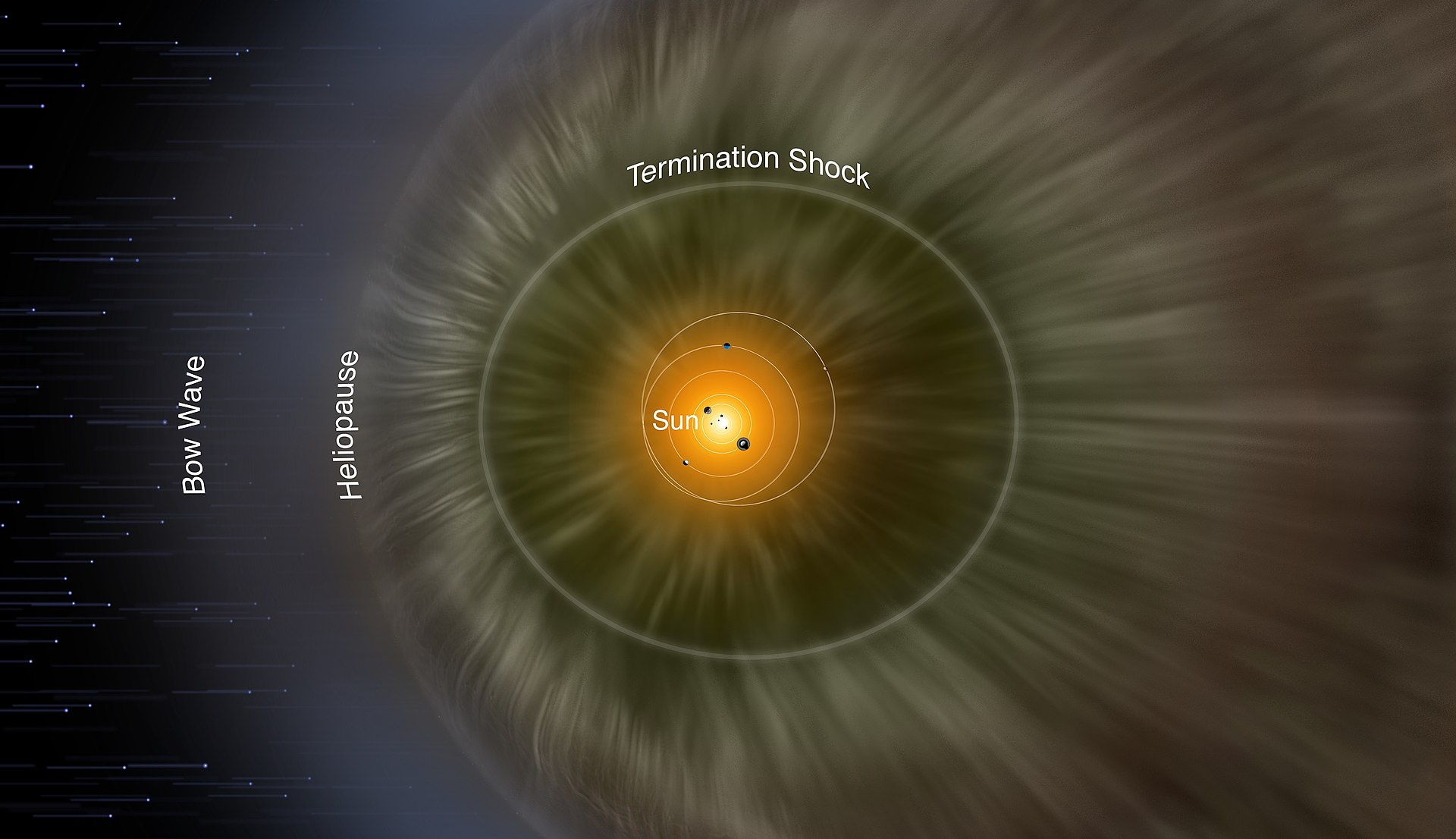It looks like you're using an Ad Blocker.
Please white-list or disable AboveTopSecret.com in your ad-blocking tool.
Thank you.
Some features of ATS will be disabled while you continue to use an ad-blocker.
share:
originally posted by: Pilgrum
a reply to: blackcrowe
The long-proposed 'heliopause' where the outside pressure is equal to that exerted by sol forming a bubble in which our solar system dwells?
Makes sense. The hydrogen would fall towards gravity and the sun pushes it out just as it's own 'mechanics' allowing it to exist.
In a weird way... it's like the solar system is IN the sun as the sun has various atmospheres, such as the earth and other planets. We're just not in the 'way too hot' range.
originally posted by: Phage
a reply to: StallionDuck
In order:
Yes.
Yes.
Yes.
Gravity.
Awesome! I got it right!
But.. For the questions part. Gravity, yes but that would lean towards an ever contracting and expanding universe, right? In the end, everything will be one massive black hole that reaches a point to where it can no longer hold it's contents and vomits out everything all over again.
Black Holes are my ultimate fascination! Can't sleep at night? Contemplate black holes. Works every time lol
a reply to: StallionDuck
Yeah. Except that, as far as can be determined, the Universe is expanding faster and faster. Not enough matter (including dark matter) for a big crunch.
Yeah. Except that, as far as can be determined, the Universe is expanding faster and faster. Not enough matter (including dark matter) for a big crunch.
a reply to: Phage
See... That right there makes it all the more confusing to me. Perhaps we're just in the expanding phase and hadn't gotten to the phase where everything starts contracting?
I know there is some question as to what causes the expansion between galaxies. It's thought to be dark energy/matter?. What about heat? Couldn't that be a factor? We look at mass and motion, and maybe it works differently in space, but mad amounts of heat from a combination of stars in galaxies seems like it would either propel a galaxy or push against other heat emitting galaxies.
Ahhh.. To know all the answers.. Unfortunately not in our lifetime, I imagine. Gives me more incentive to be frozen in a vat until they can replace all my parts with a cyber metal body
See... That right there makes it all the more confusing to me. Perhaps we're just in the expanding phase and hadn't gotten to the phase where everything starts contracting?
I know there is some question as to what causes the expansion between galaxies. It's thought to be dark energy/matter?. What about heat? Couldn't that be a factor? We look at mass and motion, and maybe it works differently in space, but mad amounts of heat from a combination of stars in galaxies seems like it would either propel a galaxy or push against other heat emitting galaxies.
Ahhh.. To know all the answers.. Unfortunately not in our lifetime, I imagine. Gives me more incentive to be frozen in a vat until they can replace all my parts with a cyber metal body
a reply to: StallionDuck
380,000 years after the big bang. When the temperature dropped below 3000 k. The small universe was full of hydrogen. The hydrogen particles/atoms were pulled together by gravity. They were big blue stars and galaxies. Only after these first hydrogen stars/galaxies died and super nova'd did they make new stars with other elements more like what we recognise now.
As for cosmic inflation/expansion. Gravity holds matter together. But. Something else produces the space. We can only see 13.8 billion years back to just after the big bang. So. You should think the universe is 13.8 billion light years big. But, Inflation seems to be happening faster. And the universe is actually around 46 billion light years. BOOM. That's another sleepless night for you.
380,000 years after the big bang. When the temperature dropped below 3000 k. The small universe was full of hydrogen. The hydrogen particles/atoms were pulled together by gravity. They were big blue stars and galaxies. Only after these first hydrogen stars/galaxies died and super nova'd did they make new stars with other elements more like what we recognise now.
As for cosmic inflation/expansion. Gravity holds matter together. But. Something else produces the space. We can only see 13.8 billion years back to just after the big bang. So. You should think the universe is 13.8 billion light years big. But, Inflation seems to be happening faster. And the universe is actually around 46 billion light years. BOOM. That's another sleepless night for you.
edit on 12-8-2018 by blackcrowe because: (no reason given)
a reply to: Phage
Yes. According to Einstein's Lambda says the universe should be flat and infinite. Although it might actually have a curviture which we can't measure. So it might curve back on itself. Or be a shape like the Taurus. Or wrap round and we keep seeing the same systems redshifted.
I have trouble contemplating the Lamda model. Flat and infinite. I accept it. Just hard to get the head around.
Yes. According to Einstein's Lambda says the universe should be flat and infinite. Although it might actually have a curviture which we can't measure. So it might curve back on itself. Or be a shape like the Taurus. Or wrap round and we keep seeing the same systems redshifted.
I have trouble contemplating the Lamda model. Flat and infinite. I accept it. Just hard to get the head around.
a reply to: StallionDuck
The Big Bang is still pretty much the stuff of hypotheses, but one idea is that the vacuum's quantum fluctuations got blown up into the macro scale, so all the clumps of matter in space (what ultimately formed into stars and galaxies) are just a "translation" of the graininess of quantum vacuum.
The Big Bang is still pretty much the stuff of hypotheses, but one idea is that the vacuum's quantum fluctuations got blown up into the macro scale, so all the clumps of matter in space (what ultimately formed into stars and galaxies) are just a "translation" of the graininess of quantum vacuum.
a reply to: Abednego
The day will come (not in our lifetimes) when. Because of cosmic inflation. No other light from stars/ galaxies etc can't be observed anymore. Anyone living on a planet will be lead to believe that they are the only thing in the observable universe.
Amazing. Is like a planet and this rock is just another island on that bigger planet. Makes you think.
The day will come (not in our lifetimes) when. Because of cosmic inflation. No other light from stars/ galaxies etc can't be observed anymore. Anyone living on a planet will be lead to believe that they are the only thing in the observable universe.
a reply to: dragonridr
And. How they managed to do anything technological with their old fashioned idea's, ways and technology.
Imagine it will be on a tour 1000 years from now. With little kids asking why it was so slow .
And. How they managed to do anything technological with their old fashioned idea's, ways and technology.
a reply to: JRedBeard
Makes you think. If this "wall" is confirmed. Then. There might be other "walls".
I wonder what "wall" might be found at the edge of our local cluster, or what kind of material is being held at bay by the electromagnetic bubble of our entire galaxy.
Makes you think. If this "wall" is confirmed. Then. There might be other "walls".
a reply to: andy06shake
This is a bit old. Maybe you've seen it before.
Well if multiverse theory turns out to hold any weight its all bubbles really.
This is a bit old. Maybe you've seen it before.
edit on 12-8-2018 by blackcrowe because: (no reason given)
In case anyone's wondering, interstellar space is filled with this ionised hydrogen, but it's so tenuous it's practically vacuum by our standards
(it's better vacuum that we can achieve in a vacuum chamber). There's only a few hydrogen atoms per cubic meter.
UV radiation from massive stars stips the electrons off those atoms, and when the electrons recombine with the nuclei again, they emit light in the red part of the spectrum. This is what give the nebulae their red glow.


I always wondered what our Solar System and its surroundings would look like from a few light years away; are we also inside a kind of nebula?
UV radiation from massive stars stips the electrons off those atoms, and when the electrons recombine with the nuclei again, they emit light in the red part of the spectrum. This is what give the nebulae their red glow.


I always wondered what our Solar System and its surroundings would look like from a few light years away; are we also inside a kind of nebula?
a reply to: wildespace
Thanks wildspace.
Beautiful pics.
I wonder the same too.
From wiki.
Thanks wildspace.
Beautiful pics.
I always wondered what our Solar System and its surroundings would look like from a few light years away; are we also inside a kind of nebula?
I wonder the same too.
The "Pillars of Creation" from the Eagle Nebula. Evidence from the Spitzer Telescope suggests that the pillars may already have been destroyed by a supernova explosion, but the light showing us the destruction will not reach the Earth for another millennium.[1] A nebula (Latin for "cloud" or "fog";[2] pl. nebulae, nebulæ, or nebulas) is an interstellar cloud of dust, hydrogen, helium and other ionized gases. Originally, nebula was a name for any diffuse astronomical object, including galaxies beyond the Milky Way. The Andromeda Galaxy, for instance, was once referred to as the Andromeda Nebula (and spiral galaxies in general as "spiral nebulae") before the true nature of galaxies was confirmed in the early 20th century by Vesto Slipher, Edwin Hubble and others.
From wiki.
a reply to: Flyingclaydisk
EDIT:
Scratch that. I didn't see your later reply
EDIT:
Scratch that. I didn't see your later reply
edit on 13/8/2018 by Soylent Green Is People because: (no reason given)
I've always found this visual analogy of the "Termination Shock" at the edge of the heliosphere interesting (the sink basin image below).
The termination shock is the shock wave that occurs where speed of the solar winds slow abruptly due to interaction with interstellar medium. At the point where this abrupt change in speed occurs, there is a shockwave.
 Credit: Wikipedia and by Yanpas - Own work, CC BY-SA 4.0, commons.wikimedia.org...
Credit: Wikipedia and by Yanpas - Own work, CC BY-SA 4.0, commons.wikimedia.org...
This is further inward than the heliopause, which is the boundary where the pressure of the interstellar medium is enough (relative to the solar winds) to push back the solar winds. I think this wall of hydrogen is supposed to exist on the outside of the heliopause (maybe?).
 Credit: NASA/IBEX/Adler Planetarium
Credit: NASA/IBEX/Adler Planetarium
The termination shock is the shock wave that occurs where speed of the solar winds slow abruptly due to interaction with interstellar medium. At the point where this abrupt change in speed occurs, there is a shockwave.

This is further inward than the heliopause, which is the boundary where the pressure of the interstellar medium is enough (relative to the solar winds) to push back the solar winds. I think this wall of hydrogen is supposed to exist on the outside of the heliopause (maybe?).

edit on 13/8/2018 by Soylent Green Is People because: (no reason given)
a reply to: Soylent Green Is People
Thanks Soylent Green Is People.
Nice find. And an simple explanation.
Thanks Soylent Green Is People.
Nice find. And an simple explanation.
new topics
-
Pentagon acknowledges secret UFO project, the Kona Blue program | Vargas Reports
Aliens and UFOs: 15 minutes ago -
Boston Dynamics say Farewell to Atlas
Science & Technology: 23 minutes ago -
I hate dreaming
Rant: 1 hours ago -
Is the origin for the Eye of Horus the pineal gland?
Philosophy and Metaphysics: 2 hours ago -
Man sets himself on fire outside Donald Trump trial
Mainstream News: 3 hours ago -
Biden says little kids flip him the bird all the time.
2024 Elections: 3 hours ago -
The Democrats Take Control the House - Look what happened while you were sleeping
US Political Madness: 3 hours ago -
Sheetz facing racial discrimination lawsuit for considering criminal history in hiring
Social Issues and Civil Unrest: 3 hours ago -
In an Historic First, In N Out Burger Permanently Closes a Location
Mainstream News: 5 hours ago -
MH370 Again....
Disaster Conspiracies: 6 hours ago
top topics
-
In an Historic First, In N Out Burger Permanently Closes a Location
Mainstream News: 5 hours ago, 14 flags -
The Democrats Take Control the House - Look what happened while you were sleeping
US Political Madness: 3 hours ago, 10 flags -
Thousands Of Young Ukrainian Men Trying To Flee The Country To Avoid Conscription And The War
Other Current Events: 16 hours ago, 8 flags -
A man of the people
Medical Issues & Conspiracies: 11 hours ago, 8 flags -
Man sets himself on fire outside Donald Trump trial
Mainstream News: 3 hours ago, 7 flags -
Biden says little kids flip him the bird all the time.
2024 Elections: 3 hours ago, 6 flags -
4 plans of US elites to defeat Russia
New World Order: 12 hours ago, 4 flags -
Is the origin for the Eye of Horus the pineal gland?
Philosophy and Metaphysics: 2 hours ago, 4 flags -
Sheetz facing racial discrimination lawsuit for considering criminal history in hiring
Social Issues and Civil Unrest: 3 hours ago, 3 flags -
Are you ready for the return of Jesus Christ? Have you been cleansed by His blood?
Religion, Faith, And Theology: 8 hours ago, 3 flags
active topics
-
Do we live in a simulation similar to The Matrix 1999?
ATS Skunk Works • 28 • : JoelSnape -
The Democrats Take Control the House - Look what happened while you were sleeping
US Political Madness • 33 • : ImagoDei -
Old School Punk
Music • 537 • : underpass61 -
Pentagon acknowledges secret UFO project, the Kona Blue program | Vargas Reports
Aliens and UFOs • 1 • : imitator -
Man sets himself on fire outside Donald Trump trial
Mainstream News • 28 • : KKLOCO -
Thousands Of Young Ukrainian Men Trying To Flee The Country To Avoid Conscription And The War
Other Current Events • 32 • : Xtrozero -
Biden says little kids flip him the bird all the time.
2024 Elections • 15 • : SideEyeEverything1 -
Boston Dynamics say Farewell to Atlas
Science & Technology • 1 • : BingoMcGoof -
In an Historic First, In N Out Burger Permanently Closes a Location
Mainstream News • 7 • : underpass61 -
12 jurors selected in Trump criminal trial
US Political Madness • 102 • : Xtrozero
